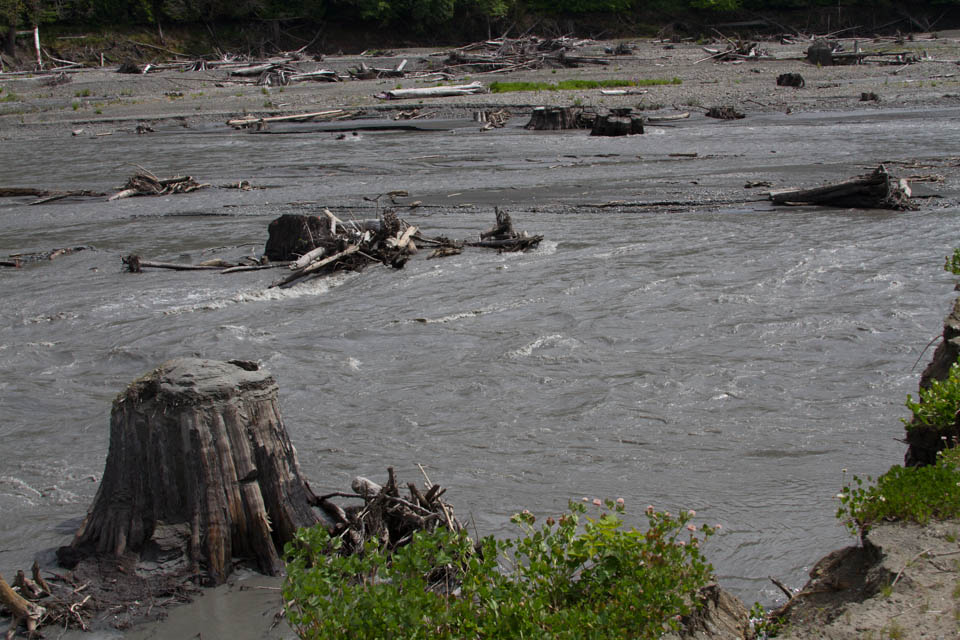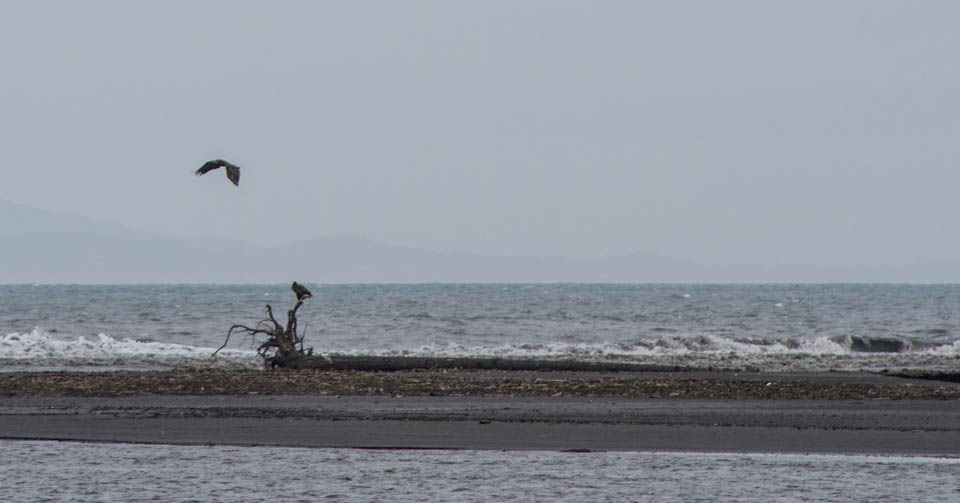PORT ANGELES – The Elwha River is, as U.S. rivers go, a dinky thing. It rises in the Olympic Mountains, draining a basin of a bit more than 300 square miles and flowing north some 45 miles before dumping its cargo into Strait of Juan de Fuca just west of Port Angeles, Wash. By my standards, it’s a wet place. The Elwha Ranger Station, in Olympic National Park, averages 56 inches of rain a year.
The scale of the thing is completely different than the rivers I’m used to. The annual flow on the Elwha at McDonald Bridge, just upstream from Port Angeles, is greater than at Otowi on the Rio Grande in New Mexico.
Here’s a few seconds of video I shot yesterday afternoon of the Elwha’s outfall into the Strait of Juan de Fuca. At somewhere around 1,500 cubic feet per second, it was bigger than the current flow on the Rio Grande. But the weird thing was the color, a sort of ashen gray.
Over the last couple of years, an effort led by the National Park Service has been underway to remove a pair of dams on the Elwha built in the first part of the 20th century to generate hydro power for the region. The goal is to restore a salmon run in what folks seem to unequivocally describe as “the largest dam removal in the United States.” The first of the two dams is gone, and work is now underway on the second. But they’re running into hiccups.
Lynda Mapes, the Seattle Times reporter who has been documenting the process, explained in a piece last month the current difficulties. The problem, in a nutshell – downstream communities, especially Port Angeles and Nippon Paper Industries, a major employer, depend on Elwha water. With huge sediment loads expected following the removal of the dams, building a treatment plan to ensure continued flow of clean water was crucial to the project:
More than $162 million was spent on the Elwha water facilities, far more than on ecosystem restoration, at $27 million — including revegetating the former lake beds, fish rearing, restoration and monitoring combined. Dam removal, including taking down both dams, removing the power lines and decommissioning the lower plant, cost $35 million.
The water facilities seemed promising at the start, with the designer, URS Corporation of Denver, winning a prestigious national award from a national professional association. But somewhere between the lump crab and avocado salad at the black-tie awards gala last spring and the first slug of sediment served up by the Elwha as the rains began in the fall, something went wrong.
Nearly a century of sediment trapped behind the dam simply overwhelmed the best efforts of human engineering. And that’s primarily with just the first of the two dams gone. Removal of the second dam is underway, but according to Mapes only 18 percent of the anticipated sediment flow has come down the river so far. The rest is still trapped behind the second dam upstream.
What’s intriguing here is the difficulty in unwinding a complex human-nature system built up over the course of a century. Best laid plans, and all.
Upstream, Lissa and I walked down an old boat ramp into what would have been Lake Aldwell, past stumps that have been underwater for nearly a century, through a tangle of riparian growth that had in places already grown as tall as us. None of the formal revegetation work has begun yet. This stuff is happening on its own. As a friend once told me, “The life force is strong.”
Downstream, we watched bald eagles on a snag out on a newly formed sandbar, where the rush of sediment is building a rapidly expanding delta. It will be worth returning in a year, and two, and five, and ten, to see how this goes.
This post has been updated to correct the body of water into which the Elwha flows



Pingback: Another Week of Anthropocene Antics, May 26, 2013 – A Few Things Ill Considered